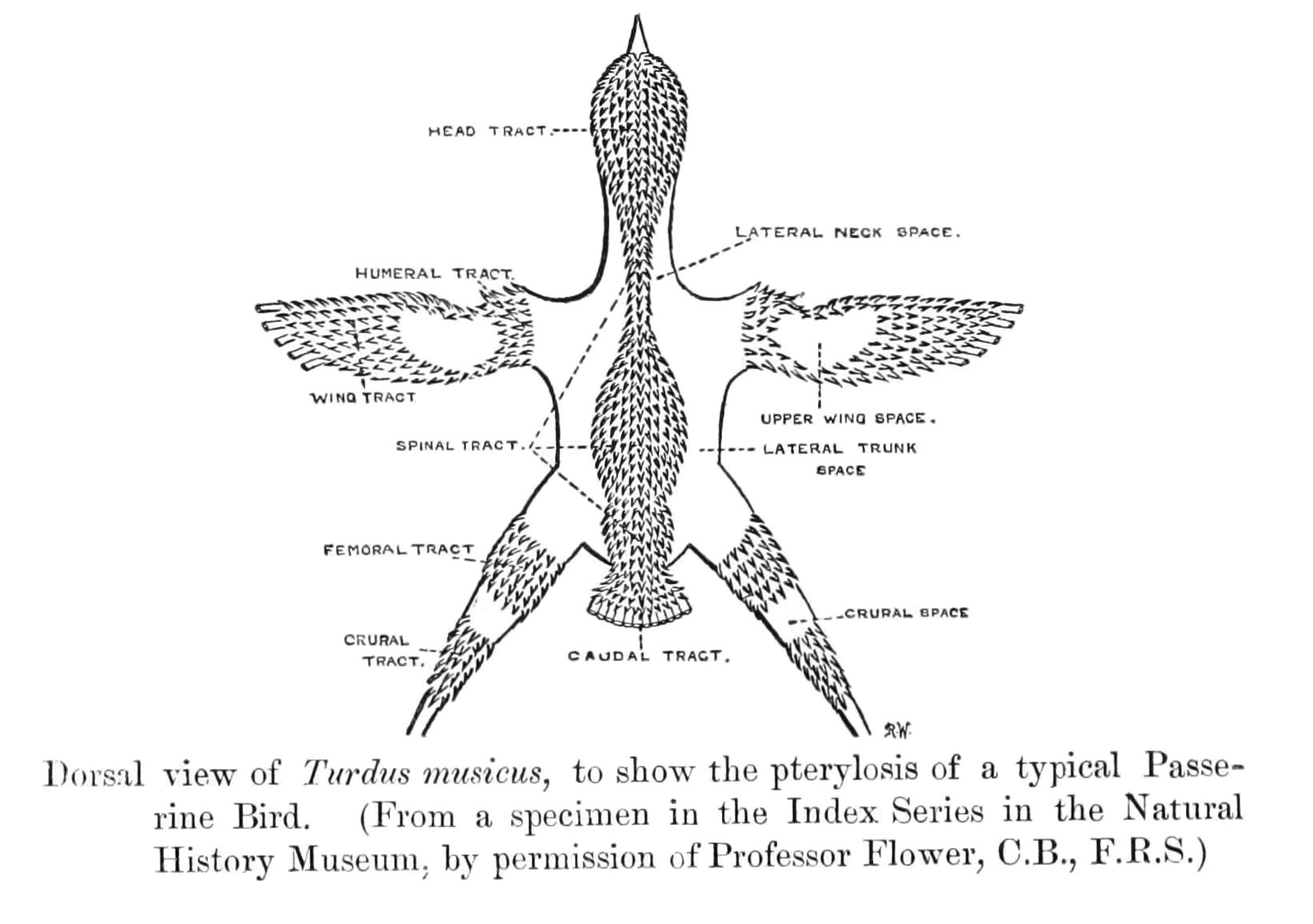|
Sylviidae
Sylviidae is a family of passerine birds that includes the typical warblers ''Sylvia'', and closely related genus '' Curruca'', formerly included in ''Sylvia''. They are found in Eurasia and Africa, with the greatest diversity in the Mediterranean region. Taxonomy and systematics The scientific name Sylviidae was introduced by the English zoologist William Elford Leach (as Sylviadæ) in a guide to the contents of the British Museum published in 1820. The family became part of an assemblage known as the Old World warblers and was a wastebin taxon with over 400 species of bird in over 70 genera. Advances in classification, particularly helped with molecular data, have led to the splitting out of several new families from within this group. There is now evidence that the Sylviidae warblers are more closely related to the Old World babblers than other birds also called warblers A molecular phylogenetic study using mitochondrial DNA sequence data published in 2011 found that the sp ... [...More Info...] [...Related Items...] OR: [Wikipedia] [Google] [Baidu] |
Old World Warbler
The Old World warblers are a large group of birds formerly grouped together in the bird family Sylviidae. They are not closely related to the New World warblers. The family held over 400 species in over 70 genera, and were the source of much taxonomic confusion. Two families were split out initially, the cisticolas into Cisticolidae and the kinglets into Regulidae. In the past 20–30 years they have been the subject of much research and many species are now placed into other families, including the Acrocephalidae, Cettiidae, Phylloscopidae, and Megaluridae. In addition some species have been moved into existing families or have not yet had their placement fully resolved. Only a small number of warblers, in just two genera, are now retained in the family Sylviidae. Characteristics Most Old World warblers are of generally undistinguished appearance, though some species are boldly marked. The sexes are often identical, but may be clearly distinct, notably in the genera '' ... [...More Info...] [...Related Items...] OR: [Wikipedia] [Google] [Baidu] |
Paradoxornithidae
The parrotbills are a family, Paradoxornithidae, of passerine birds that are primarily native to East, Southeast and South Asia, with a single species in western North America, though feral populations exist elsewhere. They are generally small birds that inhabit reedbeds, forests and similar habitats. The traditional parrotbills feed mainly on seeds, e.g. of grasses, to which their robust bill, as the name implies, is well- adapted. Members of the family are usually non- migratory. The bearded reedling or "bearded tit", a Eurasian species formerly placed here, is more insectivorous by comparison, especially in summer. It also strikingly differs in morphology, such as its finer bill, and has again been moved to the monotypic family Panuridae. Conversely, a number of other mostly insectivorous species that traditionally were placed in Timaliidae (Old World babblers), for example the fulvettas and fire-tailed myzornis, along with the wrentit (a species with a conflicting t ... [...More Info...] [...Related Items...] OR: [Wikipedia] [Google] [Baidu] |
Sylvia (bird)
The typical warblers are small birds belonging to the genus ''Sylvia'' in the "Old World warbler" (or sylviid warbler) family (biology), family Sylviidae.Del Hoyo, J.; Elliot, A., & Christie, D. (editors). (2006). ''Handbook of the Birds of the World''. Volume 11: Old World Flycatchers to Old World Warblers. Lynx Edicions. . There are seven species in the genus.Helbig, A. J. (2001). The characteristics of the genus: Phylogeny and biogeography of the genus ''Sylvia''. Pages 24–28 in: Shirihai, H., Gargallo, G., Helbig, A. J., & Harris, A. ''Sylvia Warblers''. Helm Identification Guides Jønsson, K. A. & Fjeldså, J. (2006). A phylogenetic supertree of oscine passerine birds (Aves: Passeri). ''Zoologica Scripta, Zool. Scripta'' 35 (2): 149–186. (HTML abstract) Typical warblers occur in the temperate to tropical regions of Europe, western and central Asia, and Africa, with the highest species diversity centred on the Mediterranean. They are strongly built, with stouter legs a ... [...More Info...] [...Related Items...] OR: [Wikipedia] [Google] [Baidu] |
Typical Warbler
The typical warblers are small birds belonging to the genus ''Sylvia'' in the "Old World warbler" (or sylviid warbler) family Sylviidae.Del Hoyo, J.; Elliot, A., & Christie, D. (editors). (2006). ''Handbook of the Birds of the World''. Volume 11: Old World Flycatchers to Old World Warblers. Lynx Edicions. . There are seven species in the genus.Helbig, A. J. (2001). The characteristics of the genus: Phylogeny and biogeography of the genus ''Sylvia''. Pages 24–28 in: Shirihai, H., Gargallo, G., Helbig, A. J., & Harris, A. ''Sylvia Warblers''. Helm Identification Guides Jønsson, K. A. & Fjeldså, J. (2006). A phylogenetic supertree of oscine passerine birds (Aves: Passeri). '' Zool. Scripta'' 35 (2): 149–186. (HTML abstract) Typical warblers occur in the temperate to tropical regions of Europe, western and central Asia, and Africa, with the highest species diversity centred on the Mediterranean. They are strongly built, with stouter legs and a slightly thicker bill than many ... [...More Info...] [...Related Items...] OR: [Wikipedia] [Google] [Baidu] |
Passerine
A passerine () is any bird of the order Passeriformes (; from Latin 'sparrow' and '-shaped') which includes more than half of all bird species. Sometimes known as perching birds, passerines generally have an anisodactyl arrangement of their toes (three pointing forward and one back), which facilitates perching. With more than 140 families and some 6,500 identified species, Passeriformes is the largest order of birds and one of the most diverse clades of terrestrial vertebrates, representing 60% of birds.Ericson, P.G.P. et al. (2003Evolution, biogeography, and patterns of diversification in passerine birds ''J. Avian Biol'', 34:3–15.Selvatti, A.P. et al. (2015"A Paleogene origin for crown passerines and the diversification of the Oscines in the New World" ''Molecular Phylogenetics and Evolution'', 88:1–15. Passerines are divided into three suborders: New Zealand wrens; Suboscines, primarily found in North and South America; and songbirds. Passerines originated in the ... [...More Info...] [...Related Items...] OR: [Wikipedia] [Google] [Baidu] |
Alcippeidae
''Alcippe'' is a genus of passerine birds in the monotypic family Alcippeidae. The genus once included many other fulvettas and was previously placed in families Pellorneidae or Timaliidae. Taxonomy The genus ''Alcippe'' previously included many of the fulvettas, but recent taxonomy has seen the group progressively redefined. The ''Fulvetta'' fulvettas are now placed in family Paradoxornithidae, the bush blackcap in the genus '' Sylvia'' in the family Sylviidae, and, in the most recent revision, a group of seven species were transferred to the new genus '' Schoeniparus'' in family Pellorneidae. With the rearrangement of the species there are now birds with the common name "fulvetta" in three families: in the genera '' Lioparus'' and ''Fulvetta'' in Paradoxornithidae, '' Schoeniparus'' in Pellorneidae, and ''Alcippe'' in Alcippeidae. The family Alcippeidae is sister to the family Leiothrichidae containing the laughingthrushes. The genus contains the following ten species: ... [...More Info...] [...Related Items...] OR: [Wikipedia] [Google] [Baidu] |
Eurasian Blackcap
The Eurasian blackcap (''Sylvia atricapilla'') is a bird usually known simply as the blackcap. It is a common and widespread typical warbler. It has mainly olive-grey upperparts and pale grey underparts, and differences across the five subspecies are small. Both sexes have a neat coloured cap to the head, black in the male and reddish-brown in the female. The male's typical song is a rich musical warbling, often ending in a loud high-pitched crescendo, but a simpler song is given in some isolated areas, such as valleys in the Alps. The blackcap's closest relative is the garden warbler, which looks quite different but has a similar song. The blackcap breeds in much of Europe, western Asia and northwestern Africa, and its preferred habitat is mature deciduous woodland. The male holds a territory when breeding, which is defended against garden warblers as well as other blackcaps. The nest is a neat cup, built low in brambles or scrub, and the clutch (eggs), clutch is typically 4� ... [...More Info...] [...Related Items...] OR: [Wikipedia] [Google] [Baidu] |
Garden Warbler
The garden warbler (''Sylvia borin'') is a common and widespread small bird that breeds in most of Europe and in the Palearctic to western Siberia. It is a plain, long-winged and long-tailed typical warbler with brown upperparts and dull white underparts; the sexes are similar and juveniles resemble the adults. Its two subspecies differ only slightly and interbreed where their ranges overlap. Due to its lack of distinguishing features, this species can be confused with a number of other unstreaked warblers. The garden warbler's rich melodic song is similar to that of the Eurasian blackcap, blackcap, its closest relative, which competes with it for territory when nesting in the same woodland. The preferred breeding habitat in Eurasia is open woodland with dense low cover for nesting; despite its name, gardens are rarely occupied by this small passerine bird. The clutch (eggs), clutch of four or five blotched cream or white eggs is laid in a robust cup-shaped nest built near the g ... [...More Info...] [...Related Items...] OR: [Wikipedia] [Google] [Baidu] |
Leiothrichidae
The laughingthrushes are a family, Leiothrichidae, of Old World passerine birds. The family contains 133 species and is divided into 16 genera. The species are diverse in size and coloration. These are birds of tropical areas, with the greatest variety in Southeast Asia and the Indian subcontinent. The entire family used to be included in the Old World babbler family Timaliidae. Characteristics They are small to medium-sized birds. They have strong legs, and many are quite terrestrial. They typically have generalised bills, similar to those of a thrush (bird), thrush. Most have predominantly brown plumage, with minimal difference between the sexes, but many more brightly coloured species also exist. This group is not strongly bird migration, migratory, and most species have short rounded wings, and a weak flight. They live in lightly wooded or scrubland environments, ranging from swamp to near-desert. They are primarily insectivore, insectivorous, although many will also take b ... [...More Info...] [...Related Items...] OR: [Wikipedia] [Google] [Baidu] |
Pellorneidae
The ground babblers are a family, Pellorneidae, of mostly Old World passerine birds belonging to the superfamily Sylvioidea. They are quite diverse in size and coloration, and usually characterised by soft, fluffy plumage and a tail on average the length of their body, or longer. These birds are found in tropical zones, with the greatest biodiversity in Southeast Asia and the Indian subcontinent. Morphological diversity is rather high; most species resemble warblers, jays or thrushes, making field identification difficult. The family Pellorneidae was first introduced by the French-American ornithologist Jean Théodore Delacour in 1946. Pellorneidae used to be one of four subfamilies of Timaliidae (tree- and scimitar-babblers), but was then elevated to its own family rank in 2011 based on molecular markers. Description Jungle babblers are small to medium-sized birds which are on average 14 cm long and weigh around 30g, but range from 10–26 cm, and 12-36g Divi ... [...More Info...] [...Related Items...] OR: [Wikipedia] [Google] [Baidu] |
Zosteropidae
The white-eyes are a family, Zosteropidae, of small passerine birds native to tropical, subtropical and temperate Sub-Saharan Africa, southern and eastern Asia, and Australasia. White-eyes inhabit most tropical islands in the Indian Ocean, the western Pacific Ocean, and the Gulf of Guinea. Discounting some widespread members of the genus '' Zosterops'', most species are endemic to single islands or archipelagos. The silvereye, ''Zosterops lateralis'', naturally colonised New Zealand, where it is known as the "wax-eye" or ''tauhou'' ("stranger"), from 1855. The silvereye has also been introduced to the Society Islands in French Polynesia, while the Japanese white-eye has been introduced to Hawaii. Characteristics White-eyes are mostly of undistinguished appearance, the plumage being generally greenish olive above, and pale grey below. Some species have a white or bright yellow throat, breast, or lower parts, and several have buff flanks. As their common name implies, many sp ... [...More Info...] [...Related Items...] OR: [Wikipedia] [Google] [Baidu] |




